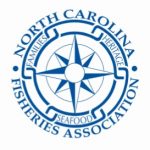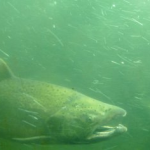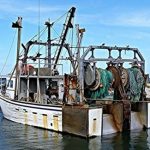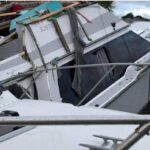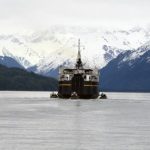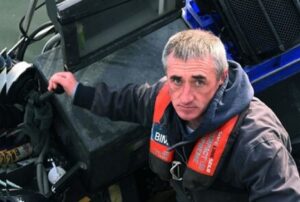Tag Archives: trawling
Wild-caught prawn trawling is changing to reduce its environmental impact
 Therese Murphy and her family are proud of their part in improving the environmental reputation of Australia’s prawn trawling industry. Australian Ocean King Prawn’s 11 trawlers work a sandy seabed where there is no reef or seagrass, 120 kilometers off the coast of Gladstone. Compulsory satellite tracking and turtle excluder devices, which allow turtles, sharks and rays to safely escape, are standard equipment on every boat. The Urangan-based business independently adopted the additional environmental measure of installing electronic monitoring cameras, including lenses pointed at the ocean floor. In 2023, the Murphy’s made history by becoming Queensland’s first state-managed fishery to earn accreditation from the Marine Stewardship Council (MSC ), an international non-profit association aiming to set standards for sustainable fishing and end overfishing. Photos, more, >>CLICK TO READ<< 11:12
Therese Murphy and her family are proud of their part in improving the environmental reputation of Australia’s prawn trawling industry. Australian Ocean King Prawn’s 11 trawlers work a sandy seabed where there is no reef or seagrass, 120 kilometers off the coast of Gladstone. Compulsory satellite tracking and turtle excluder devices, which allow turtles, sharks and rays to safely escape, are standard equipment on every boat. The Urangan-based business independently adopted the additional environmental measure of installing electronic monitoring cameras, including lenses pointed at the ocean floor. In 2023, the Murphy’s made history by becoming Queensland’s first state-managed fishery to earn accreditation from the Marine Stewardship Council (MSC ), an international non-profit association aiming to set standards for sustainable fishing and end overfishing. Photos, more, >>CLICK TO READ<< 11:12
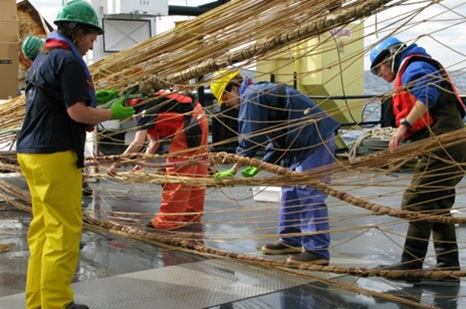
Multiple groups urge seafloor protections from pelagic trawling
A diverse group of harvesters, conservation entities and others are calling on federal fisheries managers to do more to protect seafloor habitats from midwater trawl nets they say are dragging the bottom of the ocean floor. Midwater, or pelagic trawling — used to catch schooling fish like pollock, is supposed to be fished in the water column rather than on the seafloor. For this reason, pelagic trawling is allowed in most conservation areas closed to bottom trawling — a form of fishing where nets are purposely dragged on the seafloor and damage corals, sponges and other living seafloor habitats in the process. An analysis by the National Marine Fisheries Service indicates that 40% to 100% of the width of pelagic trawl gear fished in the Gulf of Alaska and Bering Sea has been in contact with the seafloor, and that these nets, which range from 50 to 190 yards wide, are dragged for miles. more, >>CLICK TO READ<< 20:12
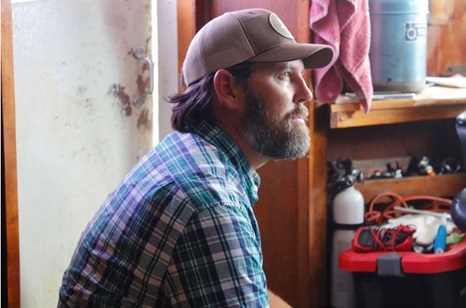
Wake Up Call Aboard The Pamela Sue
Carolina Seafood sits on Jeremy Creek, a creek named after King Jeremy, a Seewee Indian chief whose tribe lived along the creek’s banks. There I met Capt. Bryan Jones. He catches shrimp, no easy task. Besides the hard and dangerous work, he must overcome many a challenge. Capt. Jones showed me around his boat, Pamela Sue. Making our way through and past an assemblage of ropes, pulleys, nets, chains, and cables I filed a mental note. “Never bring a tripod onto a shrimp boat’s deck.” The chance of snagging something dangerous is great. Capt. Jones and I sat in the wheelhouse of his 1958 boat. As he discussed shrimping’s challenges, I looked around. I noticed bunk beds right away. Shrimpers sleep in their floating office, their home away from home. I saw too a small galley and a handsome wooden wheel caught my eye. And something else. An array of sophisticated electronics that navigate and portray bottom conditions and more. more, >>CLICK TO READ<< 10:33
Research finds trawling not as devastating as often portrayed
 An ongoing two-year independent study on trawling and its effect on benthic sea life — species that live on sea floors where trawling occurs – has found that the practice may not be as devastating as it is portrayed by some NGOs. The major data collection and analysis for the project has been completed, including assessments of mobile bottom contact gear in Europe, Australia, New Zealand, Argentina, South Africa and most of the US, making it six times more extensive than and previous compilations. Read the article here 18:36
An ongoing two-year independent study on trawling and its effect on benthic sea life — species that live on sea floors where trawling occurs – has found that the practice may not be as devastating as it is portrayed by some NGOs. The major data collection and analysis for the project has been completed, including assessments of mobile bottom contact gear in Europe, Australia, New Zealand, Argentina, South Africa and most of the US, making it six times more extensive than and previous compilations. Read the article here 18:36
PERSPECTIVE: trawling for fish and scooping up public opinion
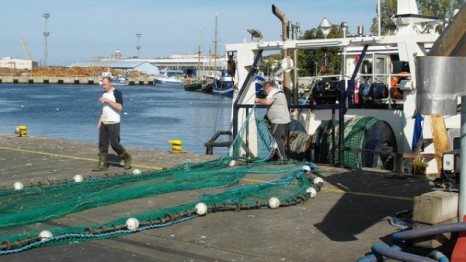 Dr Brett Molony from Department of Fisheries, WA delves into the sensitive topic of untargeted marine species being collected during commercial fishing operations in WA waters and he encourages people to put this issue into the context of what makes up a sustainable fishery. The idea of bycatch, or marine creatures being unintentionally captured by commercial fishing gears, has long proved to be a point of contention for the Australian public. But when considering these issues attached to commercial fishing, people need to bear in mind that the solution is not as simple as closing a fishery—nothing comes free. Read the rest here 19:10
Dr Brett Molony from Department of Fisheries, WA delves into the sensitive topic of untargeted marine species being collected during commercial fishing operations in WA waters and he encourages people to put this issue into the context of what makes up a sustainable fishery. The idea of bycatch, or marine creatures being unintentionally captured by commercial fishing gears, has long proved to be a point of contention for the Australian public. But when considering these issues attached to commercial fishing, people need to bear in mind that the solution is not as simple as closing a fishery—nothing comes free. Read the rest here 19:10
Trawling has “negligible” effect on soft-bottom seafloor
 Trawling is continually criticised by environmental advocates for the damage it causes to rocky marine habitats and the long-lived animals that occur in them. However, important questions remain about the extent of any damage to sandy and muddy environments. During the three-year study, fishermen trawled patches of the ocean floor off Morro Bay. Those areas were analysed by underwater photos and video and compared with nearby areas that were untouched. Read more here 07:37
Trawling is continually criticised by environmental advocates for the damage it causes to rocky marine habitats and the long-lived animals that occur in them. However, important questions remain about the extent of any damage to sandy and muddy environments. During the three-year study, fishermen trawled patches of the ocean floor off Morro Bay. Those areas were analysed by underwater photos and video and compared with nearby areas that were untouched. Read more here 07:37
Fishing technique known as trawling can sometimes be productive
 High-intensity raking of the seabed, called trawling, is a very effective fishing method that can inflict significant collateral damage on sea life. However, it can sometimes help fish populations to grow, scientists have found. more@sitnews 11:54
High-intensity raking of the seabed, called trawling, is a very effective fishing method that can inflict significant collateral damage on sea life. However, it can sometimes help fish populations to grow, scientists have found. more@sitnews 11:54






 On the eve of the meeting that the Fisheries Ministers of the European Union (EU) will hold in Brussels, the voices for and against the proposal to ban bottom trawling are becoming stronger. This Monday prominent street artists are making artworks simultaneously in six European capitals to express the social rejection of this fishing gear.
On the eve of the meeting that the Fisheries Ministers of the European Union (EU) will hold in Brussels, the voices for and against the proposal to ban bottom trawling are becoming stronger. This Monday prominent street artists are making artworks simultaneously in six European capitals to express the social rejection of this fishing gear. 





























